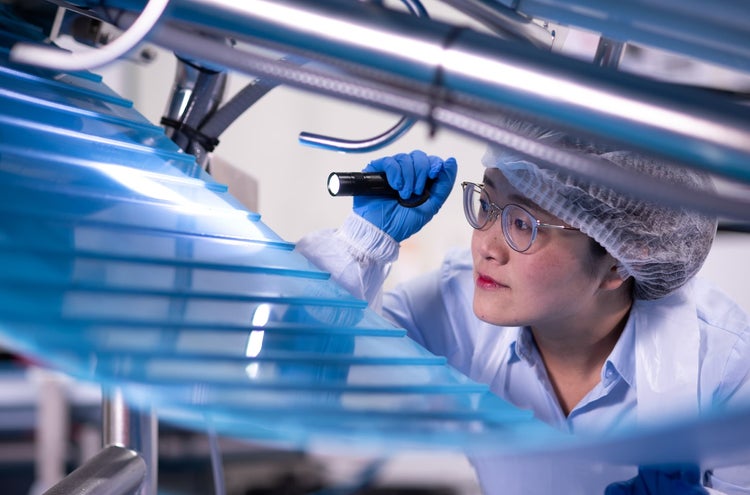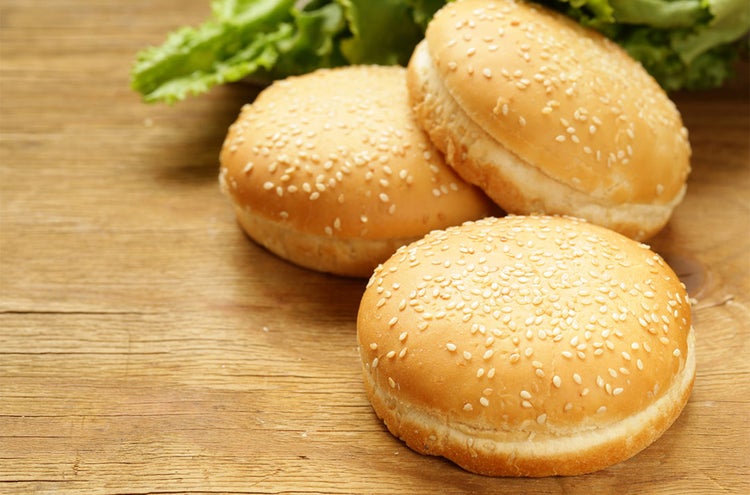How to avoid common food safety pitfalls

Staying on top of food safety at a bakery requires diligence across teams at all times, but supply chain challenges have made things even tougher. Take Los Angeles-based Aspire Bakeries, which has a central services team that helps each of the company’s 15 bakeries’ food safety and quality assurance (FSQA) teams vet and approve new suppliers. In years past, they may not have had any changes in ingredient suppliers for the year.
“Recently, at least 50% of our central team’s week involves reviewing new contingent suppliers that are being considered at the moment,” said Des Flahive, senior vice president of food safety and quality assurance, regulatory and compliance, at Aspire Bakeries. “Our FSQA teams are spending 20% of their time on new ingredients. Before, we may not have changed an ingredient at all from one year to the next. Bakeries may have spent only a day per year on new ingredient risk assessments.”
“Many in baking think that good hygienic design is only important for dairy and meat processors. Although these typically are higher risk products, bakeries should be looking at their equipment to ensure safety, such as avoiding niches and areas that could promote microbial growth. Small crevices in tools and equipment should be avoided.”
Ensuring that ingredients coming into bakeries are safe is just one piece of the food safety puzzle. Food safety requires strict adherence to good manufacturing practices (GMPs) through proper cleaning, worker training, accurate labeling and more. With the many pressures placed on the industry today with high-demand, supply chain challenges and an inexperienced labor force, it can be easy for bakery teams to fall into bad habits. Food safety professionals shared misconceptions that many have and common pitfalls that bakeries should avoid.
The size and speed at which equipment at large bakeries runs means that letting food safety problems slip into the process can be costly.
“We run our operations 24/6; that can be a challenge in itself,” said Jennifer Hughes, food safety compliance specialist at the McKee Foods plant in Gentry, Ark. “We produce a lot of product in a very short period of time. So if we don’t stay on top of things, we can lose a lot of product very quickly. We produce millions of cartons of Little Debbie products a week.”
Not everyone is aware of all the work that goes into keeping baked products safe, she said.
“I think the common misconception is that baking is simple,” Ms. Hughes said. “There’s a lot of science and due diligence that goes into designing and producing a baked product that is delicious and safe for consumers.”
Nathan Mirdamadi, senior food safety specialist, North America, Commercial Food Sanitation, said many in baking think that good hygienic design is only important for dairy and meat processors. Although these typically are higher risk products, bakeries should be looking at their equipment to ensure safety, such as avoiding niches and areas that could promote microbial growth. Small crevices in tools and equipment should be avoided.
“When I think of hygienic design, it’s more than the materials in which the equipment is made of but also the design,” he said. “An easy example for a layman and one we use in training is the use of a spatula. Commonly, you will find two-piece spatulas and single-piece spatulas. They both serve the same function, but in an industrial function where we’re trying to make hundreds of millions of pounds or servings, for hygiene reasons, you definitely want a single piece.”
Another misconception Mr. Mirdamadi cited is that many think that robust pathogen environmental monitoring (PEM) is only important in high-risk processing. He says he commonly reviews bakery PEM programs that may do 10 to 20 swabs in a month, but the bakery will do them all in one day rather than spreading them out weekly or biweekly.
“You want to keep the whole program on its toes,” he said. “Too often you see the microbiologist directly or indirectly telling sanitation, ‘Hey we’re going to be swabbing today.’ Sanitation knows where the swabs are going to be taken. What do they do? They go out and clean better than normal or put down a sanitizer at times at higher concentrations in the areas they know are going to be swabbed.”
"It’s about the controlled and minimized use of water. Vacuums, brushes, dry vapor steam, dry ice blasting and alcohol are all good choices in dry cleaning areas. The liberal use of compressed air isn’t."
Dry cleaning after the cook step, such as an oven, fryer or extruder, is a best practice. The product has very low-water activity so any water added will support microbial growth. But that doesn’t mean that absolutely no water can be used.
“It’s about the controlled and minimized use of water,” Mr. Mirdamadi said. “There are some dry cleaning techniques that use very little water. But sometimes you need just a little bit to help remove the soil. In these dry environments, we should think about water as actually gasoline and the pathogens as little embers. We don’t want to use a water hose because a fire will rage, but strategic use of water can be acceptable.”
Vacuums, brushes, dry vapor steam, dry ice blasting and alcohol are all good choices in dry cleaning areas. The liberal use of compressed air isn’t, Mr. Mirdamadi said.
“Cleaning is the removal of soil, not just the relocation of it,” he pointed out. “Whenever we go to dry cleaning, it admittedly can be more tedious. I’m not going to say that compressed air can’t be used, but it needs to be used more like a scalpel rather than an axe.”
Bill Steadman, manager, AIB International, said one common error bakeries make is failing to follow label directions and chemical dilution rates for cleaning chemicals. Another is the failure to use gloves correctly, including employees touching nonfood contact surfaces with gloved hands without washing their hands or changing out their gloves before continuing work. He added that many wrongly assume that if a product is baked, it’s safe.
“With the onset of the Food Safety Modernization Act (FSMA), bakeries now must prove through scientific references or lethality studies that the baking process reduces and/or eliminates the risk of harmful food-borne bacteria,” Mr. Steadman said.
AIB International offers a kill-step validation calculator for bakers to download from its website. It uses a data logger to register internal product temperatures during baking.
"We’re at a point in the industry where we have far better tools in our toolbox than we’ve ever had. The problem is, in many cases, we just don’t clean well. Cleaning is not that complicated; getting a surface visually clean is fairly simple.”
Mr. Mirdamadi said he sees many people relying too heavily on cleaning chemicals or looking for what he called the “miracle in a drum” that will solve all of their sanitation concerns.
“We’re at a point in the industry where we have far better tools in our toolbox than we’ve ever had,” he explained. “The problem is, in many cases, we just don’t clean well. Cleaning is not that complicated. We’ve managed to make it very complicated, but getting a surface visually clean is fairly simple.”
This article is an excerpt from the July 2022 issue of Baking & Snack. To read the entire feature on Food Safety, click here.



